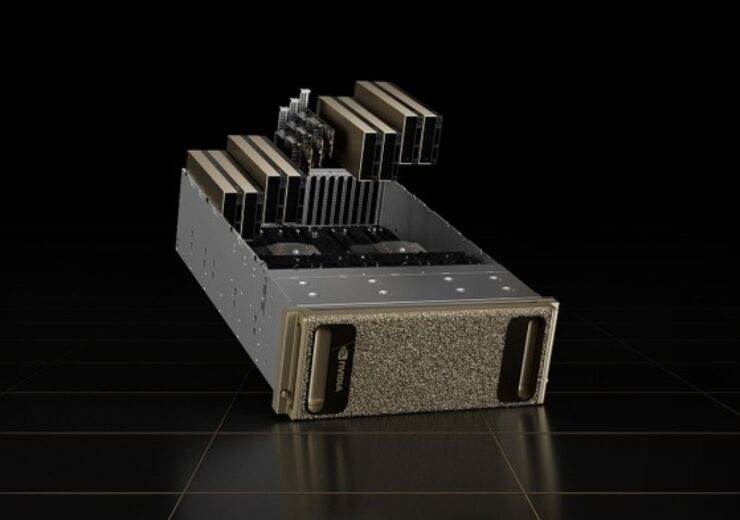NVIDIA OVX is expected to deliver the next generation of compute power needed for the most complex digital twins of buildings, factories, and entire cities

The second generation OVX computing system from Nvidia. (Credit: NVIDIA Corporation)
Nvidia has launched its second generation OVX computing system, which is powered by Nvidia Ada Lovelace GPU architecture and improved networking technology, with an aim to provide the foundation for graphics and simulation for the metaverse.
The new Nvidia OVX systems are expected to provide better real-time graphics, artificial intelligence (AI) as well digital twin simulation capabilities.
Furthermore, they are designed to create 3D virtual worlds using 3D software applications. They will also enable operations of digital twin simulations on the Nvidia omniverse enterprise platform to let enterprises develop and run metaverse applications.
Nvidia professional visualization vice president Bob Pette said: “Large-scale digital twins are redefining how nearly every industry plans, designs and builds in the physical world.
“NVIDIA OVX will provide the next generation of compute power required for the most complex digital twins of factories, buildings and entire cities.”
Omniverse workloads running on OVX are said to benefit from the capabilities of L40 graphic processing unit’s (GPU) third-generation RT cores and fourth-generation Tensor cores. The capabilities include physically accurate simulations, accelerated ray-traced and path-traced material rendering, and photorealistic 3D synthetic data generation.
Additionally, the new OVX system includes the ConnectX-7 SmartNIC, which improves network and storage performance and synchronises timing precisely for true-to-life digital twins, stated the company.
Nvidia revealed that BMW Group and Jaguar Land Rover are among the first to incorporate the new OVX systems.
BMW Group innovation and virtual production head Jürgen Wittmann said: “Planning our factories of the future starts with building state-of-the-art digital twins using NVIDIA Omniverse.
“Using NVIDIA OVX systems to run our digital twin workloads will provide the performance and scale needed to develop large-scale photorealistic models of our factories and conduct true-to-reality simulations that will transform our manufacturing, design and production processes.”
The second generation OVX systems are expected to be available by early 2023 from Inspur, Lenovo and Supermicro.


